- What Are Fake iPhone Chargers?
- Where Are Fake iPhone Chargers Sold?
- Spot a Fake iPhone Charger in 6 Ways
- How to Spot Fake iPhone Charger Listings
- What to Do If You Purchase a Fake iPhone Charger
- Where to Buy Real iPhone Chargers
- Frequently Asked Questions
As of 2021, there are over 1 billion active iPhones operating worldwide. Each of these phones requires a charger to continue working, meaning it's reasonable to estimate that there are well over 1 billion iPhone chargers in use. Unfortunately, iPhone's surge in popularity over the last decade has allowed scammers to capitalize on Apple's momentum by selling their own counterfeit products.

- Financial Fraud Protection
- Identity Theft Protection
- Family Protection & VPN
However, these fake Apple chargers cause risks to the consumer. When it comes to fakes, it's not all about saving a buck—there are real-life hazards to using these fake products. Below, we'll walk you through everything you need to know to tell the difference between original Apple chargers and the fakes so that you can keep yourself and your Apple device safe.
What Are Fake iPhone Chargers?
Fake Apple chargers are cheap, counterfeit charging cables that scammers sell to take advantage of consumers. These knockoff chargers usually fall into a few different categories:
- Fake chargers that scammers brand as a genuine "Apple" product
- Cheap cables that don't follow industry standards
- Poor-quality cables that market themselves as Apple alternatives
Fake products created by these scams can be dangerous. One Bloomberg report told the story of an individual who unknowingly used a counterfeit iPhone charger (sold on Instagram) that exploded while charging the device. It caused a severe life-threatening incident that highlights the danger of using counterfeit products.
Yes, knockoffs can be cheaper, but they're made with inferior components that can damage your Apple device. In addition, they often don't charge devices as quickly (or at all) and are susceptible to overheating due to inadequate use of electrical insulation.
Where Are Fake iPhone Chargers Sold?
Scammers sell fake Apple chargers all across the internet. Earlier in 2021, Apple confirmed that they have a covert team of experts to investigate the rising problem:
We have a dedicated team of experts constantly working with law enforcement, merchants, social media companies, and e-commerce sites around the world to remove counterfeit products from the market.
In the last year, we have sought the removal of over 1 million listings for counterfeit and fake Apple products from online marketplaces, including Facebook and Instagram.
Here's a list of the most common places you'll find fake iPhone chargers:
- Wish
- eBay
- Amazon
- Facebook Marketplace
- Craigslist
- Walmart Marketplace
- Social media ads
- Alibaba
However, keep in mind that these sites all sell legitimate Apple products, too—that's why you need the know-how to distinguish genuine chargers from the fakes.
Spot a Fake iPhone Charger in 6 Ways
- Scrutizine the packaging
- Find the MFi badge
- Look for the product's manufacturing information
- Check the end of the lightning connector cable
- Analyze the user manual
- When in doubt, don't test it
1. Scrutinize the Packaging
You'll often be able to discover a fake product before even opening the box. First, take a look at your charger's packaging. The container should feature a black-and-white image of the product. Next, look at the end of the USB connector—fakes often use a color version that gives the metallic prongs a gold, metallic look. However, genuine Apple chargers come in a box that is not colored.
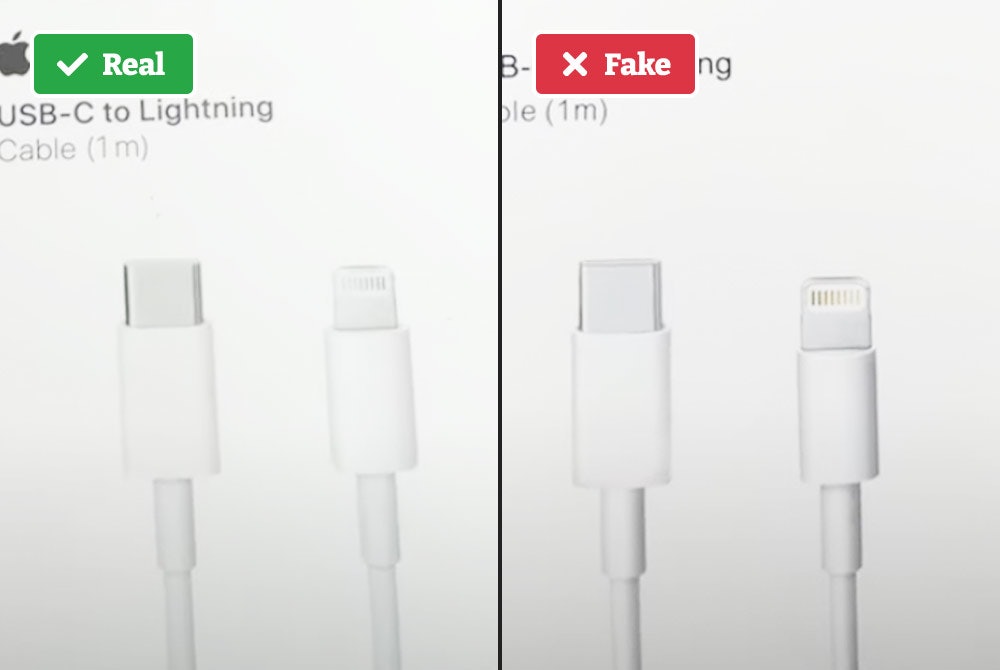
Fakes also often get the details wrong. For example, the fake packaging below has two barcodes on the bottom, which you won't find on an original charger's packaging.
2. Find the MFi Badge
Apple adds the "Made for iPhone" badge to all of its certified products. While fakes can copy this label, too, you can rest assured that a product without this badge is almost always going to be a fake.
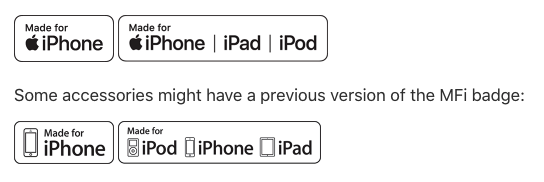
3. Look for the Product's Manufacturing Information
Apple prints the charger's manufacturing details along the length of the cord. You'll find it about seven inches from the USB connector, followed by a 12-digit serial number. The charging cable will say "Designed by Apple in California" and then mention it's "Assembled in China," "Assembled in Vietnam," or "Indústria Brasileira."
4. Check the End of the Lightning-Connector Cable
Apple includes several ways for you to distinguish genuine charger connect ends from fakes on their support page. For example, apple's charging cable end has smooth, rounded gold (or silver) contacts, whereas imitations often have a rough finish with squared contacts.
5. Analyze the User Manual
There are many details and text that go into the user manuals, so this is naturally where many scammers make mistakes. For example, genuine Apple products use professional binding with their booklets, whereas this fake has used a big staple to hold the pages together.
Also, look for typos and text misalignments—scammers are usually trying to copy the text from a genuine product, but they sometimes add extra spaces or incorrect letters.
6. When in Doubt, Don't Test It
You'll be able to recognize a fake from the real deal chargers by using them on your phone, but we don't recommend performing this test if you're in doubt. However, if you've already been using the suspected cable and have noticed overheating or significantly longer charger timings, then there's a good chance you may have a fake.
How to Spot Fake iPhone Charger Listings
Unless you're purchasing the product in person at a store or through a Craigslist seller, you'll need to identify the scams before getting your hands on them. Here's how to identify a fake iPhone charger from analyzing the listing alone:
- Price: Apple chargers sell for around $20. If a seller lists a price significantly lower than that, then be on high alert for a fake.
- Reviews: Check the 5-star reviews for fake feedback. Then, check the 1-star reviews for reports of fakes from other buyers.
- Seller: Look for seller inconsistencies. For example, if the seller lists their email address and name, the two should be in sync—a seller named Kyle Horton with an email address [email protected] should be a red flag.
- Images: The seller should have actual photos of the product—not photos they took from Apple's website. If the seller hasn't listed their own images of a product, ask for pictures before purchasing.
- Typos: Scammers often make grammar and typos mistakes. If the listing is littered with fundamental spelling and punctuation mistakes, be cautious moving forward.
What to Do If You Purchase a Fake iPhone Charger
Buying a fake iPhone charger is annoying, but it's not the end of the world. First, stop using the product. Counterfeit chargers are made with cheap components that can damage your product. Some have even been reported to explode or cause fires. Stop using the product immediately.
Next, contact the seller to request a refund. If the seller refuses to communicate with you or initiate a refund, then get the police involved. You can also contact the FBI's digital division to report the crime.
You can also contact the site where you purchased the product to report the fraud and request your money back. Here's the process on a few popular sites:
- Amazon: Contact Amazon customer service to request their A-to-Z Guarantee.
- eBay: Contact eBay customer support to ask about their money-back guarantee.
- Wish: Wish has a 30-day return policy, but they have an extensive list of exceptions that don't fall under this policy. Contact Wish to report your counterfeit and see if you qualify.
- Walmart Marketplace: Contact Walmart customer support about their Walmart Marketplace Promise.
Where to Buy Real iPhone Chargers
You can buy genuine iPhone chargers on sites like Amazon and eBay, but there's always the risk of purchasing a counterfeit. However, you can buy with confidence from Apple's list of authorized resellers. Here are a few popular retailers on the list:
- Best Buy
- Target
- Walmart
- B&H Photo
- Adorama
- AT&T
- T-Mobile
- Verizon
- Staples
- Office Depot

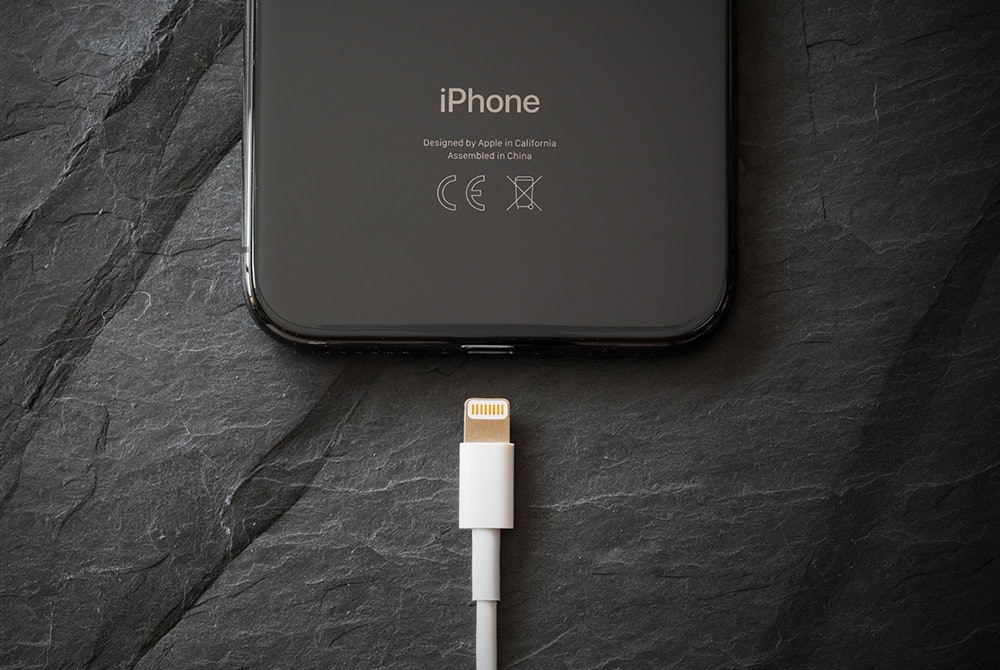
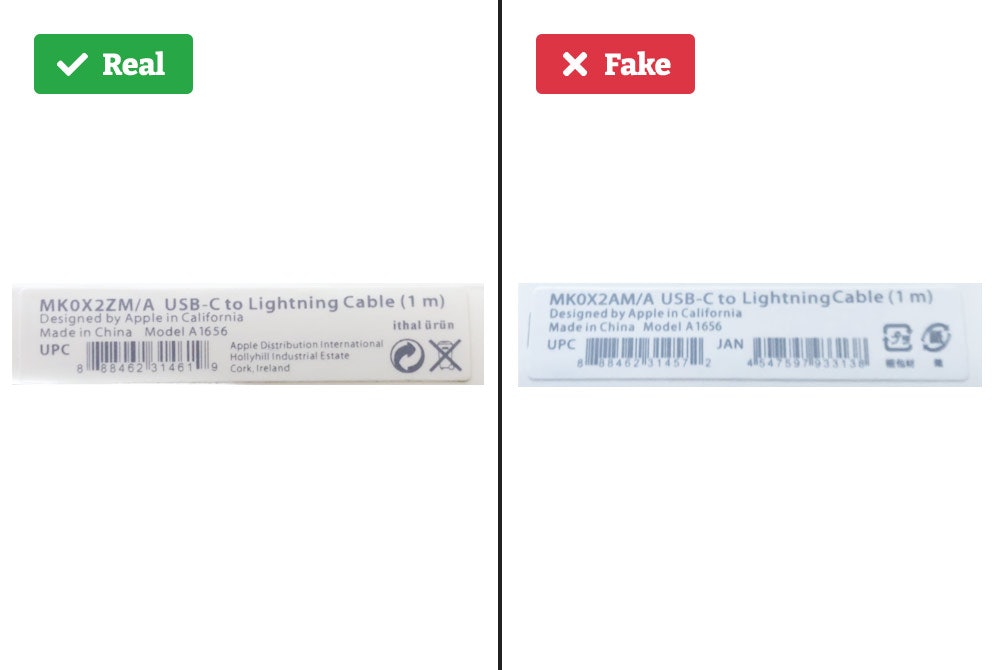
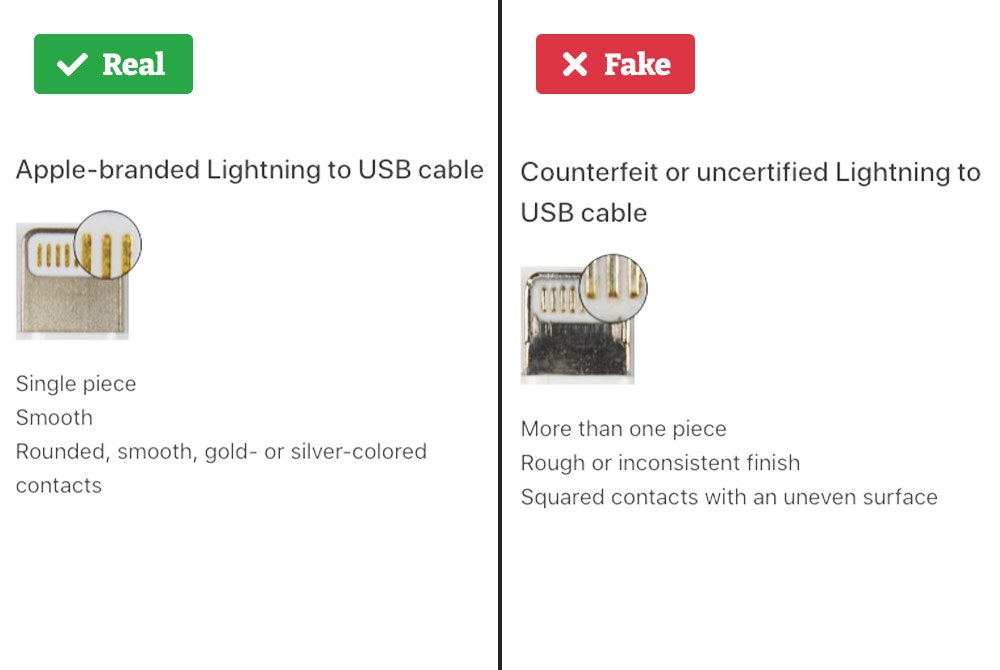
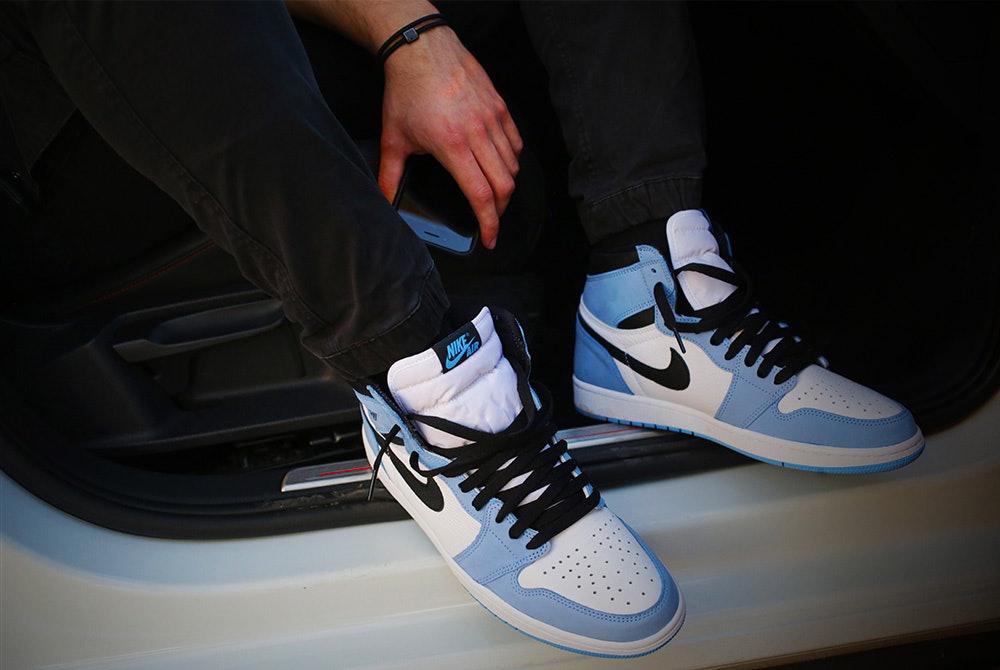
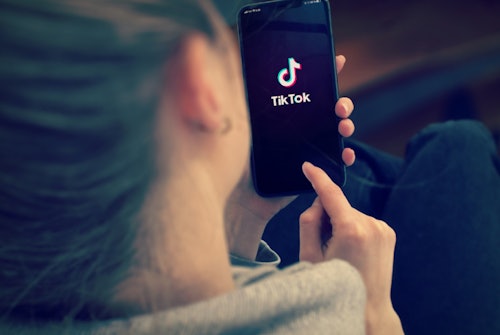

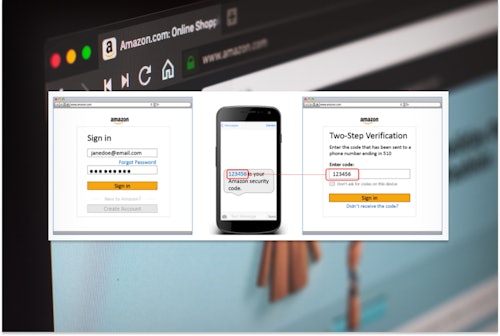

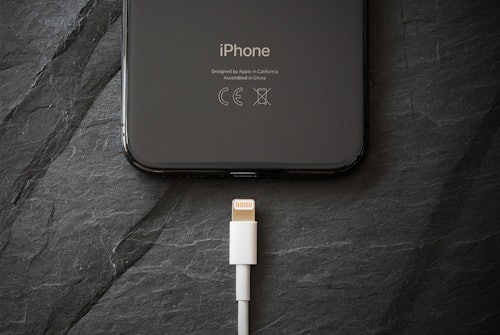
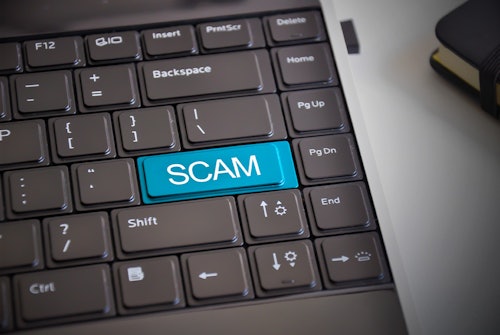
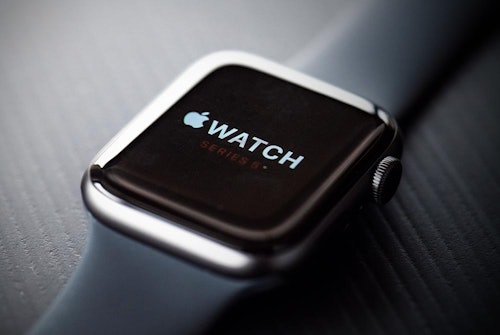
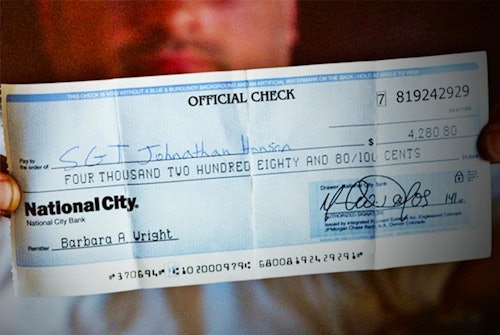
Comments